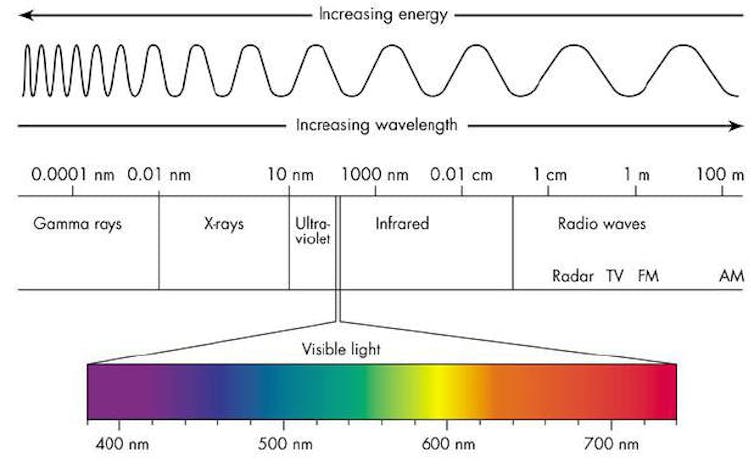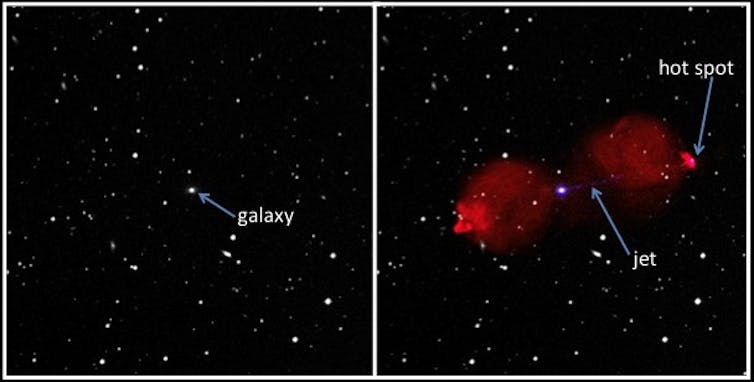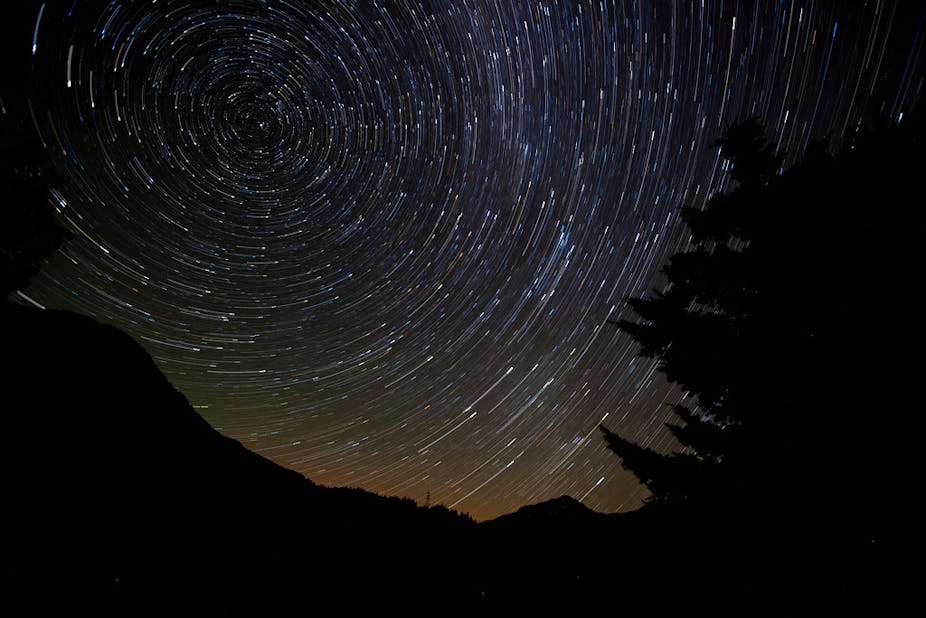Humans have always had a deep affinity with the night sky.
Over millennia the stars have guided us in our travels, provided a grand canvas for the great stories of mythology and invoked a sense of wonder that has pushed us to question and understand our place in the universe. The human experience with the night sky repeats across cultures, representing a significant touchstone in our shared heritage.
For most of human existence, we have used our unaided eyes to explore the universe. The eye is an amazing, self-assembling telescope, consisting of a lens of approximately 5mm diameter, an exposure time of roughly 1/15 of a second, and a filter that passes wavelengths of electromagnetic radiation between 400 and 700 nanometres.
It’s this wavelength range, commonly known as visible light, that most people naturally identify with the study of astronomy. But, as the following diagram reveals, visible light makes up only a tiny fraction of the overall electromagnetic spectrum.

My career has been spent studying radio astronomy. I care about the “invisible” light with wavelengths far more than visible light – as shown to the far right on the figure above.
Objects in the universe, such as galaxies and stars, produce light that spans the entire electromagnetic spectrum. Each segment of the spectrum reveals something different about the physics of the objects.
Consider the two images below of the same patch of sky, centred on a galaxy. The image on the left was made by a telescope at visible wavelengths. The image on the right is the same, but with a radio image placed over the top.

The visible light image reveals the emission produced by stars in the galaxy, the result of hot atoms bouncing around in the outer layers of the stellar atmospheres.
This is rather gentle physics.
In striking contrast, the radio image shows vast balloons that extend well beyond the limits of the galaxy as seen in visible light. The radio emission is caused by the interactions between fast electrons and magnetic fields.
Where does this radio emitting material come from? At the heart of the galaxy is a supermassive black hole, perhaps hundreds of millions times more massive than our sun. In the act of attracting and devouring material from its environment, the black hole ejects some of the material in jets moving at close to the speed of light.
The jets can be seen in the radio image connecting the galaxy to “hot spots”, where the jets collide with the intergalactic environment. This is far from gentle, revealing some of the most extreme physics known in the universe.
So radio telescopes reveal information that is completely different to that obtained with visible light telescopes. The same can be said of gamma-ray and X-ray telescopes, at the short wavelength end of the electromagnetic spectrum.
To piece together a complete picture of the physics of the universe and the objects in it, astronomers need to collect all this information.
As for the tools astronomers use, all telescopes work via essentially the same principles. Visible light and radio telescopes often use mirrors (made of glass and metal, respectively) to concentrate radiation onto a detector, as shown below.

Since it’s possible to build extremely sensitive radio telescopes and because the radio emission from celestial objects is often strong, radio astronomers can study objects over the entire history of the universe, looking back in time almost all the way back to the Big Bang.
Radio astronomers can directly detect the relic radiation from the Big Bang, known as the Cosmic Microwave Background (CMB). CMB radiation originates only 300,000 years after the Big Bang and its detection constitutes a major part of the evidence that the universe originated at the Big Bang.
This is one of the many ways radio astronomy continues to help us discover and understand our purpose in the universe.
See more Explainer articles on The Conversation.

